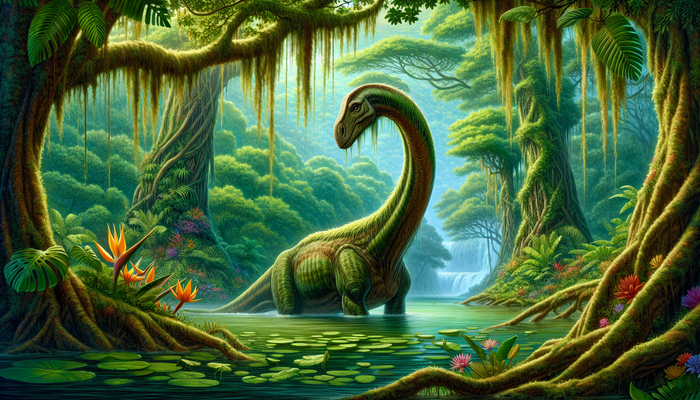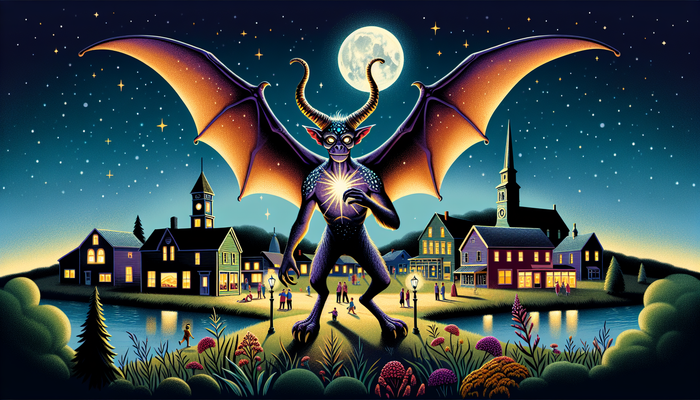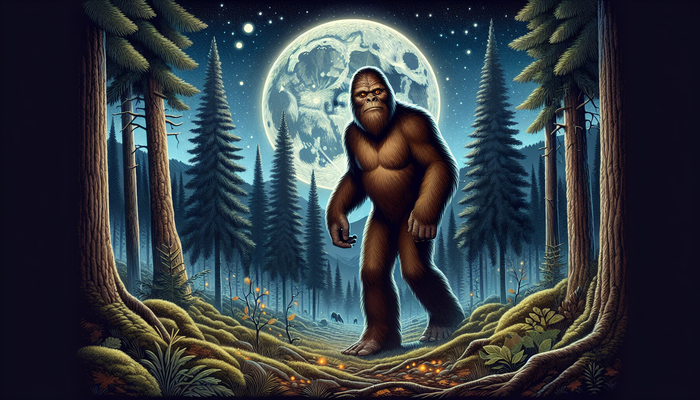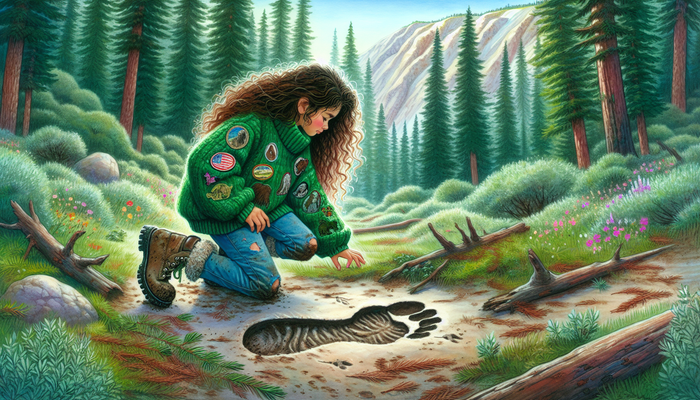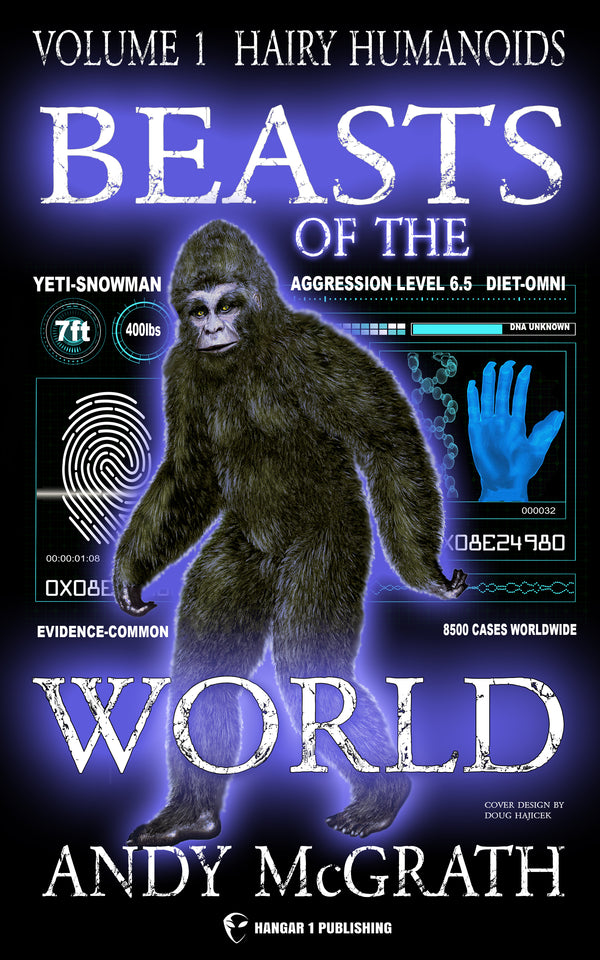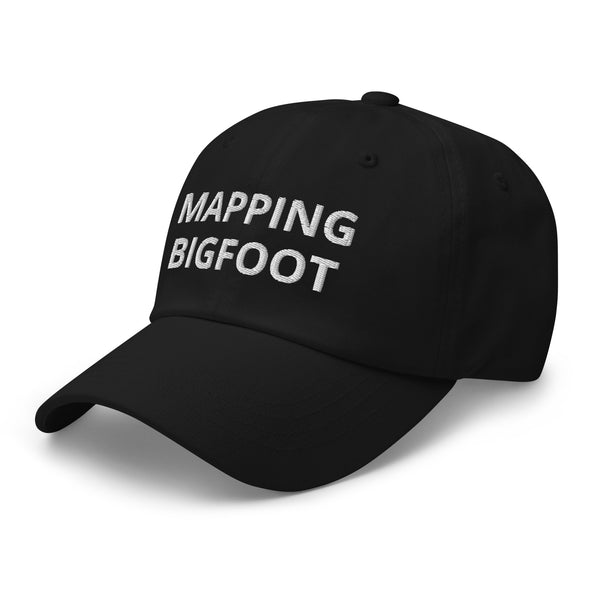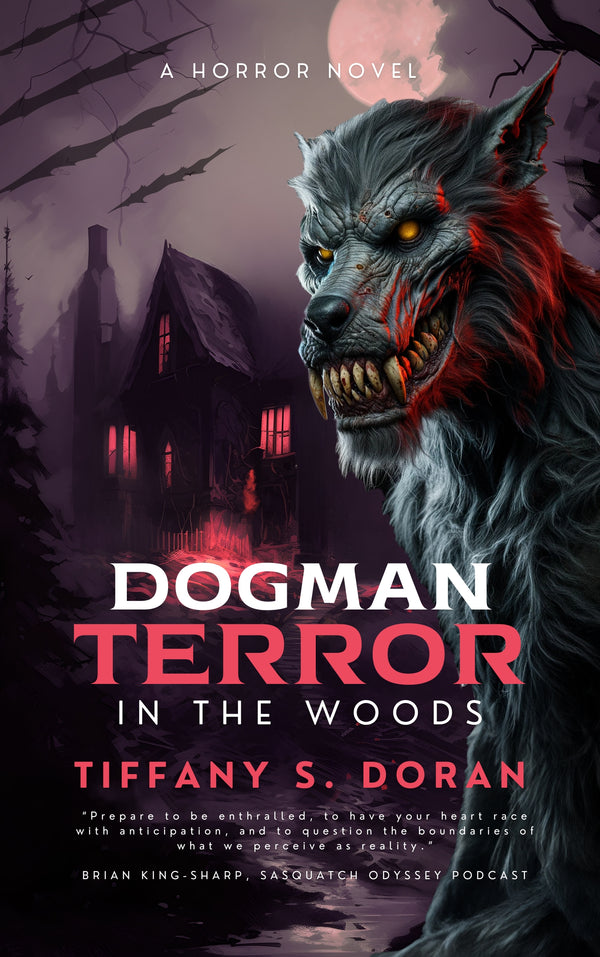The Truth About the Beast of Bray Road
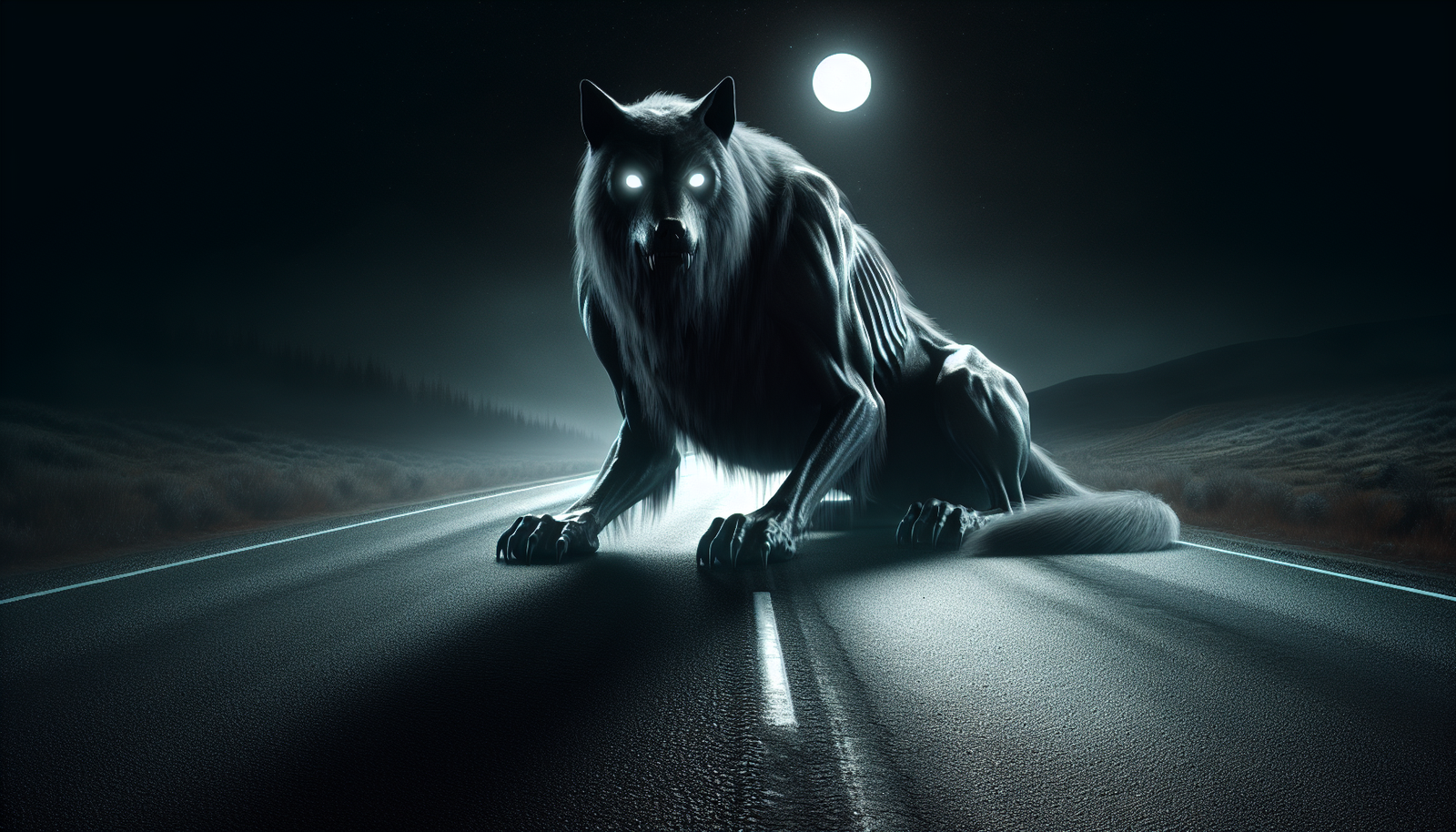
Lucas Jennings, Cryptozoologist and Adventurous Naturalist
Introduction
The winding country roads of rural Wisconsin hold more than meets the eye. Nestled among the rolling hills and sprawling farmland lies a mystery—a creature shrouded in legend and intrigue. I’m talking about the Beast of Bray Road, an enigmatic cryptid that has embedded itself into local lore and captured the imaginations of generations. As someone who has dedicated his life to uncovering hidden creatures, I’ve long been fascinated by the tales surrounding this Wisconsin anomaly. So join me as we unravel its origins, explore the eyewitness accounts, and delve into the theories about what this beast could be. One thing’s for certain—the deeper you look, the more captivating the puzzle becomes.
The Genesis of a Legend
Our journey starts back in 1936 with the first reported sighting of the creature known as the Beast of Bray Road. The witness was Mark Shackleman, a night watchman at St. Coletta School for Exceptional Children near Jefferson, Wisconsin. Part of Shackleman’s nightly rounds took him across the grounds of this former convent, including the open fields where ancient Native American burial mounds had been preserved.
One evening close to midnight, Shackleman was crossing one of these fields when he noticed a shadowy figure hunched atop a nearby mound. As he approached with his flashlight, the creature’s lupine movements suggested it was a wolf or dog. But even in the dim light, Shackleman could tell this was no ordinary canine—the beast was massive, and as it turned to face him, it unfurled its body to stand upright on two legs, well over six feet tall.
Shackleman would later describe the creature as having the muscular frame of a man beneath its dark, shaggy fur. Its face was distinctly wolf-like, yet its eyes appeared almost human. When it opened its mouth to growl, the sound seemed both primal and unsettlingly human. Then, in an instant, the creature fled on all fours into the forest.
This bizarre encounter stuck with Shackleman, but the beast did not reappear. Over the years, he shared his experience with only his closest confidants, and the story faded into local legend. But in the 1980s, sightings of the creature began to resurface, earning it the name “The Beast of Bray Road” and embedding it firmly in Wisconsin folklore.
Anatomy of the Beast
While descriptions of the Beast vary across eyewitness accounts, certain characteristics remain consistent. It is invariably described as a large, bipedal creature, between 6 and 7 feet tall when standing upright. Its muscular frame and broad shoulders give it an imposing, powerful stature.
The Beast’s head closely resembles that of a wolf or bear, featuring a long snout, pointed ears, and prominent canine teeth. But perhaps its most striking feature is its eyes—multiple witnesses have reported glowing red or orange eyes that almost seem to radiate an otherworldly energy.
Thick fur covers the creature’s body, ranging in color from gray to brown to black in some accounts. The fur itself can appear shaggy or matted in places, adding to the Beast’s feral appearance. Some witnesses have noted the creature has an overpowering, unpleasant musky odor, like that of a wild animal.
In terms of movement, the Beast has been seen both running on all fours and walking or standing in a bipedal, human-like fashion. When upright, its “hands” take on an eerily human quality, able to grasp or hold items. The creature’s ability to transition smoothly between quadrupedal and bipedal locomotion only adds to its mystique.
Some reports depict the Beast as timid and elusive, fleeing from human contact. But others describe aggressive, threatening behavior, including chasing vehicles, leaping onto cars, even breaking into homes. These accounts suggest that while the creature seems intelligent, its actions remain unpredictable—is it to be feared or merely misunderstood? The question remains.
The Surge of Sightings in the Modern Era
While scattered early accounts exist, the 1980s and 1990s saw a dramatic surge in reported sightings of the Beast of Bray Road. Suddenly, stories of encounters with this mysterious cryptid were emerging left and right in and around Elkhorn.
In 1989, a woman named Lori Endrizzi had a late-night encounter that set the modern wave in motion. While driving home after dark, she saw a large figure hunched at the roadside. As she slowed to get a better look, the creature twisted to face her, revealing a wolf-like head atop a powerfully built humanoid body. Endrizzi insisted that what she saw was no ordinary wolf or bear—it was something unnatural.
More accounts soon followed, such as a 1989 report from farmer Scott Bray describing a massive, muscular wolf-like animal on his land. Teenager Heather Bowey and her friends claimed to have been chased by a beast fitting the description through the woods in 1990.
The details in these independent accounts lined up too consistently to be dismissed. The witnesses stood by the sincerity of what they saw, even under scrutiny. Moreover, many reported tangible evidence left behind, like claw marks scraping vehicles or animal carcasses found partially eaten in a distinctive manner.
Skeptics may scoff, but having spoken to many eyewitnesses myself, their fear and conviction are palpable. And the more reports that surfaced, the harder it became to attribute every one to overactive imaginations.
Making matters more bizarre, sightings were not limited to nocturnal hours. Several accounts place the creature roaming in broad daylight through cornfields and along the roadside. If these witnesses were to be believed, this was no phantom of the night, but a flesh and blood animal boldly going about its business, even under the sun’s revealing light.
Theories and Speculations
Of course, the critical question remains—just what kind of animal could this be? Numerous theories have emerged over the years, ranging from the fantastical to the mundane. The lack of a specimen has left the door wide open for speculation.
Some connect the Beast to traditional werewolf lore, a shapeshifter trapped between human and lupine form. Others posit it may represent an undiscovered species, a relic of prehistoric times roaming the Wisconsin wilds. More skeptical minds believe witnesses have merely misidentified normal wildlife—wolves, bears, wild dogs—seen under misleading conditions.
I’ve also considered the possibility of mass hysteria playing a role. Once a legend takes root, people may be predisposed to mistake ordinary sights for supernatural encounters. A bear with mange, seen at night, could easily be misconstrued as a bipedal werewolf by a mind primed to see the Beast.
Of course, the Beast’s uncanny ability to evade capture only adds to its mystique. If this is a flesh and blood animal, where are the photos, videos, bones, scat samples, or other tangible evidence one would expect to find? Until such evidence surfaces, the debate over the Beast’s origins remains open.
Linda Godfrey's Crusade
In the 1990s, the surge of sightings prompted a local reporter named Linda Godfrey to dig deeper into the mystery of the Beast. Assigning her to cover the sensational stories for The Week newspaper, her editors likely expected a quick write-up debunking the “local legend.” But what Godfrey found would confound her own skepticism and launch her decades-long quest to unravel the truth.
Speaking directly to witnesses, Godfrey found their accounts eerily consistent and their fear palpable. Try as she might, she could not conclusively identify the creature they described with any known animal. As her investigation progressed, she became convinced that something inexplicable was inspiring these sightings.
Godfrey went on to compile her findings into the book The Beast of Bray Road: Tailing Wisconsin's Werewolf, bringing the story to a wider audience. While the book provided no definitive answers, Godfrey's thoughtful analysis of the evidence and eyewitness testimonies deepened the intrigue around the Beast.
No matter your stance on the creature’s existence, Godfrey's work shined an important light on this cryptid. She approached the subject with journalistic rigor but also an open mind—a rare combination. Her book remains an instrumental case study for enthusiasts like myself.
Skepticism vs. Belief
Of course, not everyone in the scientific community has welcomed the legend of the Beast with open arms. Mainstream zoology largely dismisses the creature as fantasy, or at best an exaggerated misidentification. Without verifiable physical evidence, they argue, its existence remains unproven.
This skepticism has created a divide of sorts within cryptozoology circles. Some in the field align closely with traditional science, demanding high burdens of proof before acknowledging a creature like the Beast. Others are more open to eyewitness testimony as a starting point for further investigation.
The quest for evidence continues, with both skeptics and believers searching for potential Beast habitats, examining mysterious animal remains, and deploying cameras in hopes of capturing the elusive creature on film. Until the Beast is conclusively proven or disproven, the debate remains heated on both sides. The divide invites scrutiny from the scientific establishment but also pushes cryptozoologists to strengthen their methods and arguments.
The Beast in Pop Culture
Despite the controversy around its existence, the Beast of Bray Road has secured a place in popular culture. It has inspired numerous books aimed at both cryptozoology enthusiasts and horror fans, as well as television shows, documentaries, and even movies like The Beast of Bray Road.
Fictional portrayals take creative license of course, but they have helped propel the creature to folklore status. The Beast has become a modern symbol of our fascination with monsters and the unknown. Its popularity is driven more by its mystery than by concrete facts.
Some portrayals depict the Beast as an aggressive predator, a shock-driven Hollywood twist. But fictional accounts often say more about our own fears and fantasies than about the actual witness accounts. As scholars, we must be careful not to let pop culture representations overshadow the eyewitness testimonies.
Still, these artistic interpretations have helped ingrain the Beast into our cultural consciousness. For a creature whose reality is still debated, it has achieved a surprisingly far-reaching impact on the public imagination.
Community and Camaraderie
As a cryptozoologist, I've found the Beast phenomenon has also fostered a sense of community among those who share a passion for studying mysterious creatures. The Beast serves as a unifying force and rallying point for enthusiasts to connect and collaborate.
Discussion forums online buzz with theories about the Beast, from the pragmatic to the fantastical. Conferences and events in Wisconsin provide opportunities for firsthand accounts, investigative findings, and even Beast-hunting expeditions. Local restaurants and shops pay homage through Beast-themed menus and souvenirs.
Organizations like the Wisconsin Paranormal Research Society have emerged to document sightings and research the legend. Skeptic or believer, amateur or professional, the Beast invites a shared sense of adventure and discovery. Even if we disagree on conclusions, our curiosity unites us.
The Enduring Enigma
Sightings of the Beast have declined since the 1990s, but its enduring mystique and cultural footprint keep the story alive. As technology improves, cryptozoologists hold out hope that evidence may yet surface to solve the mystery one way or another. Until then, the Beast remains an enigma—neither confirmed nor conclusively debunked.
For researchers like myself, the quest continues. Advances in forensics, population genetics, trail cameras, and data analysis offer new avenues to pursue hard evidence. Of course, if the Beast is supernatural in nature, traditional techniques may fail. Skeptics demand proof either way. But definitive answers have remained elusive.
The challenge only adds to the allure of this cryptid. Solving the puzzle would be thrilling, but the mystery itself enthralls us. Enthusiasts are driven not just by answers, but by the adventure of the hunt. With so much yet undiscovered, who knows what wonders or terrors may lurk in nature's shadows? The Beast's legend compels us to keep searching.
Conclusion
In the decades since its emergence, the Beast of Bray Road has secured its place among the pantheon of great American folklore. What began as an obscure Wisconsin legend has transformed into a cultural phenomenon that fascinates cryptozoologists and everyday citizens alike.
The Beast's tale highlights the enduring appeal of mysteries and monsters. Its story reminds us that science has not unlocked all of nature's secrets. Strange and wondrous creatures may still roam the wilds, just out of sight. Some dismiss the Beast as fantasy, others obsess over its reality—but all are captivated by the uncertainty it represents.
As an intrepid cryptozoologist, I cannot help but feel drawn to unravel the puzzle of Bray Road's enigmatic beast. The accounts are too consistent, the witnesses too credible to dismiss outright. An undiscovered species is not so far-fetched in the expanse of Wisconsin's wilderness. But without proof either way, the debate rages on.
Perhaps we search for creatures like the Beast not just for the thrill of discovery, but because their mysteries remind us that the world remains filled with wonders yet unseen. They kindle our curiosity and sense of adventure. And they reveal that the unknown is not always to be feared, but rather explored with open minds.
So while the Beast's true nature eludes us for now, its legend will endure. And its mystery will continue to lure bold adventurers and researchers into the wilds, chasing the question that lies at the heart of all great mysteries—what if?
Call to Action
I hope this glimpse into the perplexing legend of the Beast of Bray Road has piqued your curiosity as much as it has mine over the years. For anyone captivated by cryptozoology and tales of the unexplained, I highly recommend digging deeper into the history and eyewitness accounts surrounding this Wisconsin legend.
Have you had any encounters you think might be linked to the Beast? Or do you have alternative theories about what this creature could be? Share your thoughts and experiences with me and other enthusiasts using the hashtag #TheBeastofBrayRoad. Your perspectives could provide new insights into this captivating cryptid.
One thing is certain—we must remain open-minded in the face of uncertainty. Nature contains endless surprises, and legends often carry seeds of truth. The Beast's reality may be debatable, but one fact remains—exploring the unknown promises adventure for those bold enough to seek it. I, for one, am not giving up the search!


